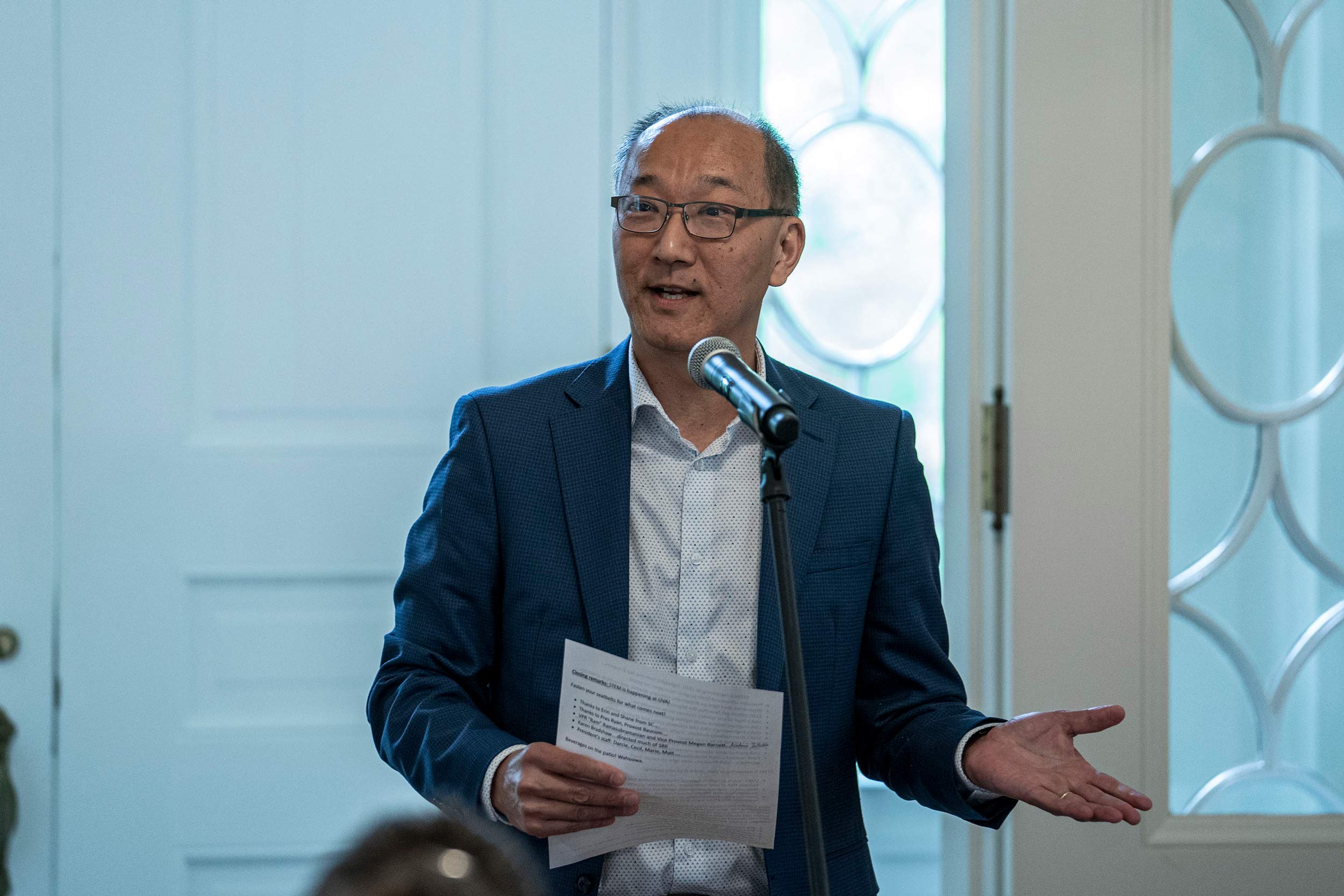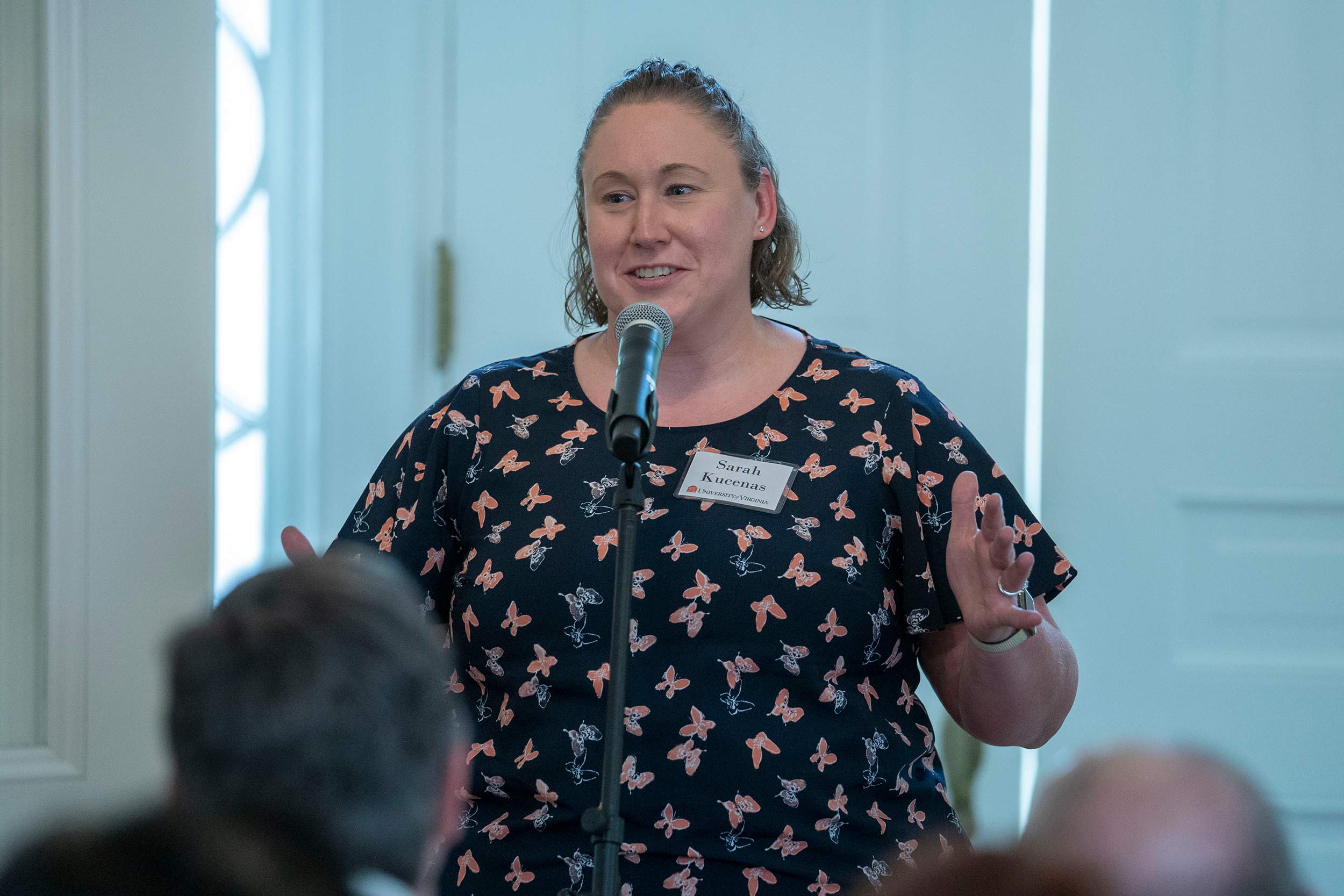He considered where his expertise intersected with public service and decided to tackle the question of how automobiles and other generators of carbon dioxide gas might be affecting ocean life.
Though incorporating a relatively new area – ocean acidification – was a risk, it paid off. Twenty years later, his research has led to a White House appointment to help address the problem.
The Best Laid Plans
Philip Bourne, who serves as Stephenson Dean of the School of Data Science, talked about leaving academia after a long career – in fact, traveling by motorcycle across the country during the polar vortex of 2014 – to serve as the National Institutes of Health’s first chief data officer. He also detailed why he returned to education after three years of trying to wrangle bureaucracy.
Dean Jennifer West of the School of Engineering and Applied Science, meanwhile, told the story of how a disruptive storm determined what type of scientist she would be.
As a prospective college student, West was supposed to visit Cornell University, where she had planned to study veterinary medicine. Traveling alone for the first time, she went to check out the school before her parents paid the deposit.
“There’s a huge snowstorm, and I get stranded in Boston,” West said. “The little plane to Ithaca can’t take off. … I’m in Logan Airport, 17 years old, panicking about what to do.”
She called her mom, who suggested that she visit the Massachusetts Institute of Technology. West had applied to MIT to get her father “off my back.” Even after being accepted, she had no interest in attending. But given the circumstances, a tour made sense if it could be combined with a free place to stay during the storm.







